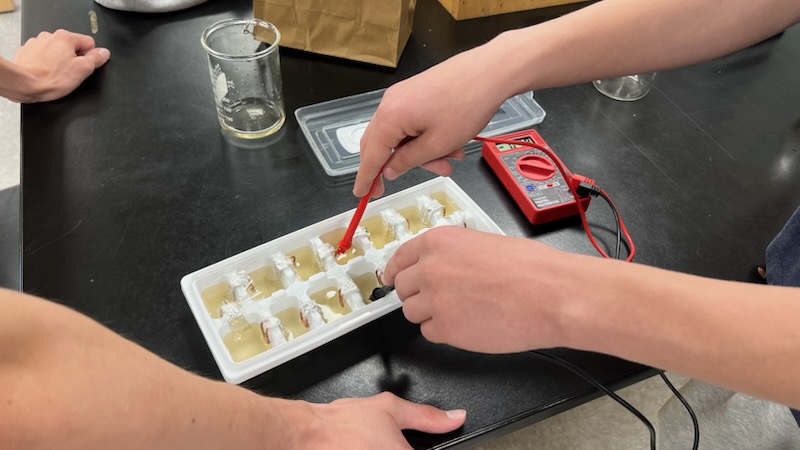Dissection has been practiced for many centuries, though it has not always been the sanitary process campus students take part in today. In the 1600s, artist and scientist Leonardo DaVinci dissected human corpses in order to make detailed and accurate drawings of the human body’s interior.
During the Civil War, doctors dug up the dead bodies of soldiers and then dissected them, with the purpose of studying war wounds and how to treat them.
Now, in the 21st century, students in classrooms across the nation dissect animals in their biology classes in order to learn about the composition of animals, as well as humans.
“Dissections help students compare the anatomy of all the animals in the world,” Rod Atchley, science teacher, said. “They get an idea of how different animals do different jobs. You are able to see the similarities and the differences.”
As jars containing various dead animals are passed out to each table for observation, the reactions of the students are varied. Some students are disgusted and push the jars away from them; others are intrigued and hold the jars closer for a better look.
For the students who enjoy dissecting things and are not disgusted by blood and guts, biology class became even more interesting than usual on dissection days in January.
“I think its fun to dissect things,” Kyle Gentz, ’05, said. “I like playing with the specimens. It’s really fascinating to see what’s inside all the different animals.”
On the other hand, some students, for whom the thought of poking a scalpel into a frog fills them with disgust, cringe at the mere thought of biology class.
“Dissection stinks, literally,” Ben Daniels, ’04, said. “The dissections are better than they were last year, but I still don’t like it much.”
Other students have mixed feelings about dissections and biology class in general.
“I don’t like biology very much,” Clyde Shaffer, ’04, said. “But doing dissections is pretty cool. The only bad part about it is dissecting the fish; the fish disturbs me.”
Whatever their reaction may be, each biology student will be required to either dissect, or observe the dissection of numerous specimens, including frogs, fish, clams and sponges.
“I had never done a dissection before until this year,” Carina Moran, ’05, said. “It’s all new to me. I think it is fun and interesting, and I look forward to doing a new dissection each day.”






